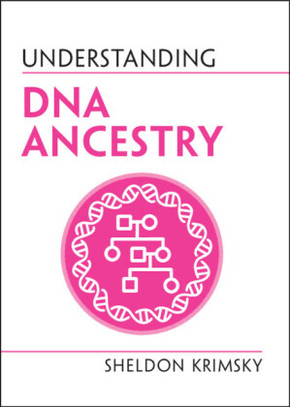Understanding DNA Ancestry
| Verlag | Cambridge University Press |
| Auflage | 2021 |
| Seiten | 150 |
| Format | 16,1 x 0,9 x 18,5 cm |
| Gewicht | 198 g |
| Artikeltyp | Englisches Buch |
| Reihe | Understanding Life |
| EAN | 9781108816038 |
| Bestell-Nr | 10881603UA |
An accessible introduction to how DNA ancestry tests work, what they can be used for, and the associated ethical issues.
DNA ancestry companies generate revenues in the region of $1bn a year, and the company 23andMe is said to have sold 10 million DNA ancestry kits to date. Although evidently popular, the science behind how DNA ancestry tests work is mystifying and difficult for the general public to interpret and understand. In this accessible and engaging book, Sheldon Krimsky, a leading researcher, investigates the methods that different companies use for DNA ancestry testing. He also discusses what the tests are used for, from their application in criminal investigations to discovering missing relatives. With a lack of transparency from companies in sharing their data, absent validation of methods by independent scientists, and currently no agreed-upon standards of accuracy, this book also examines the ethical issues behind genetic genealogy testing, including concerns surrounding data privacy and security. It demystifies the art and science of DNA ancestry testing for the general reader.
Inhaltsverzeichnis:
1. Introduction; 2. The business of DNA ancestry; 3. Geographical origins and movements of early human populations; 4. The science behind DNA ancestry testing; 5. Ancestry informative markers; 6. Ancestry DNA population reference panels; 7. Comparing a donor's DNA to reference panel populations; 8. Probing your DNA; 9. Forensic applications of ancestry DNA results; 10. Privacy, personal identity and legal issues; 11. Discovering unknown, missing or mistaken relatives; 12. Accuracy, consistency and validation of DNA ancestry tests; 13. Conclusion.
Rezension:
'Sheldon's book represents a much needed historical, technical, and ethical treatment of this rapidly evolving and growing industry. It tackles a complex topic that many are fascinated by but few have the educational background to appreciate un-shepherded fully, and does so in a way that is accessible and easy to internalize by the very lay readers who have literally built the entire industry with their demand. His book is not only timely, but way, way overdue ... this book is in my view instrumental for anyone considering a genetic ancestry test. If you are a lay consumer of genetic ancestry testing products, it has my highest recommendation for you.' Tony N. Frudakis, Ph.D., Forensic Scientist, Albuquerque Police Department DNA Laboratory, and Founder DNAPrint Genomics, Inc. (1999)

